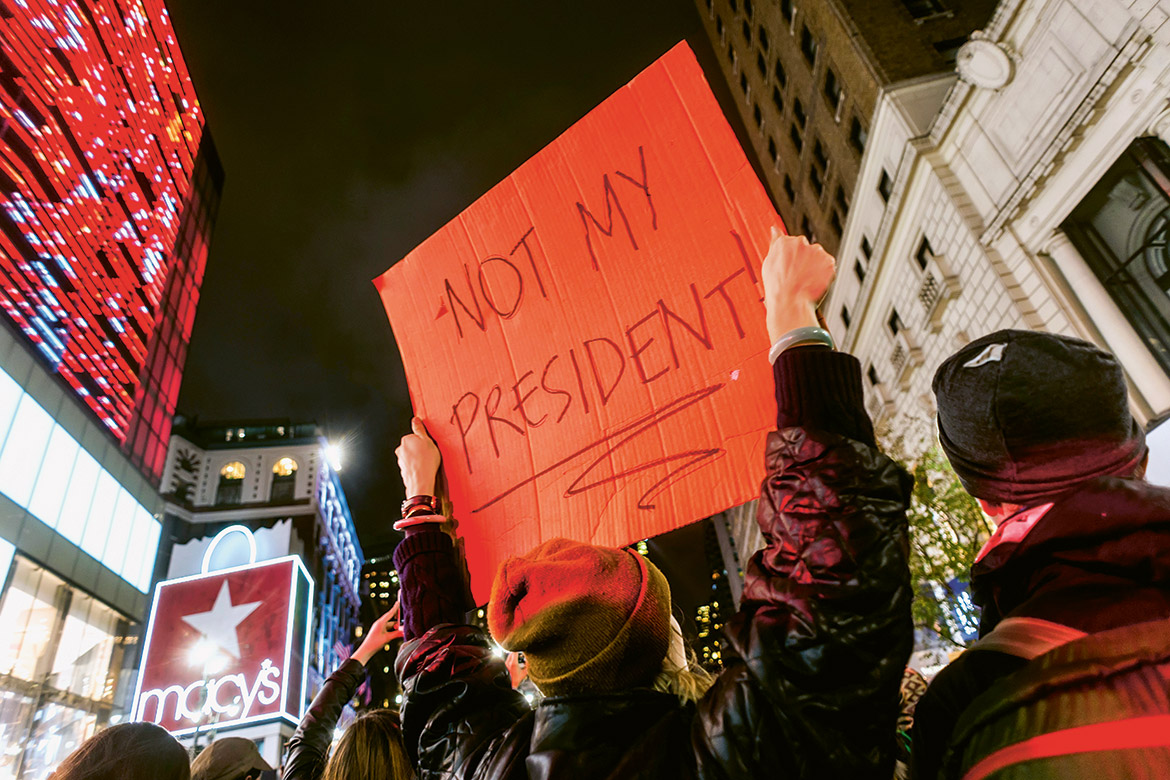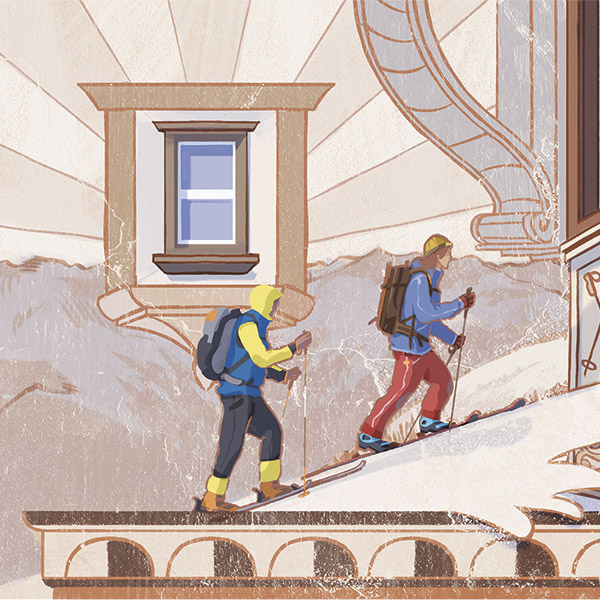ELECTION RESEARCH
I object!
Many voters don’t choose a candidate they like, but reject the one they don’t. The University of Lausanne is researching into feelings of disenfranchisement and the increasing negativity surrounding politics.

A protest against the election of the Republican President Donald Trump in New York on 9 November 2016. | Photo: Stacy Walsh Rosenstock / Alamy Stock Photo
When Donald Trump won the 2016 US presidential election against the Democratic candidate Hillary Clinton, he had an important ally: negativity. More than half of those who chose him were actually voting against Clinton. It seems that she was considerably less popular with the electorate.
This is nothing new, neither historically nor geographically. Negativity has always existed in politics – and not just in the USA. In 2023, Tiana Moser of the Green Liberal Party was elected in the second round of voting to the Council of States in the Swiss Parliament, despite not enjoying much widespread sympathy. People were more concerned about preventing the election of Gregor Rutz, the candidate from the right-wing People’s Party (SVP). And when the right-wing Jacques Chirac ran against Jean-Marie Le Pen of the far right in the second round of the 2002 presidential election in France, many on the left voted for Chirac, despite his unpopularity with them. Negativity is an elementary fact of political life.
But what drives people to vote negatively? And how influential is this way of expressing their opinion? Diego Garzia is running a research group at the University of Lausanne that’s investigating this topic. “Negative politics is an umbrella term that encompasses different types of political negativity”, he explains. He is especially interested in how it’s manifested in the population, and how it’s reflected in people’s voting behaviour. To this end, he is analysing long-term data from post-election surveys. “There’s a tendency to distance oneself emotionally from any single party and to express greater distaste towards unpopular candidates”, says Garzia.
Garzia distinguishes between the polarisation of political parties – in other words, their ideological differences – and the emotional polarisation of the voters: “We use this to measure the degree of aversion that voters feel towards the opposition”. This aversion has not increased significantly in Europe’s multi-party democracies for the simple reason that it has always been high. “Even a voter for the Swiss Socialist Party is highly unlikely to support an initiative launched by the right-wing People’s Party (SVP/UDC), or vice versa”, says Garzia.
But what’s changing is the so-called polarity of voters. “It makes a difference whether someone is 100 percent in favour of party A, but is only 50 percent in favour of party B – or whether someone is 50 percent in favour of party A and doesn’t support B at all”, says Garzia. “One person will be motivated to vote by their attachment to a party, whereas another will be motivated by their aversions”. Even if the difference in support is the same for both people, the quality of their support changes. It slips into the negative because fewer people have great sympathy for any particular party or politician. Instead, they have great antipathy. “The result is a politics that is very strongly characterised by dislikes and negativity”.
Nevertheless, negative voting doesn’t have to be bad for democracy, says Thomas Milic from the Liechtenstein Institute, who is also researching into voting behaviour in Switzerland. “Especially in majority elections with several rounds of voting, the initial aim is to express one’s sympathies so that later rounds can determine a candidate who can be accepted by a majority”, he says. “From the voters’ point of view, it’s about eliminating the greatest evil”. Voters on the far left could probably cope with a candidate from the centrist Green Liberal Party, for example, but not with someone from the SVP.
“Multi-party systems are an antidote to the politics of negativity”, says Garzia. This is why the proportion of negative voters in Europe hovers around 10 percent. Another reason is the fact that coalitions are often needed to form a government. “This means that the parties have to work with each other after an election. The greater the amount of negativity in advance, the more bitter the final result will taste afterwards”.
One thing remains as yet unexplored, however, namely the impact that all this has on voter turnout. “I suspect that people who are very negatively polarised will vote more often”, says Garzia. “This could explain why campaigns are becoming ever more rancorous. This kind of negativity could embolden those people to go to the polling stations whose votes the parties in question need if they are to have any chance of winning”.




